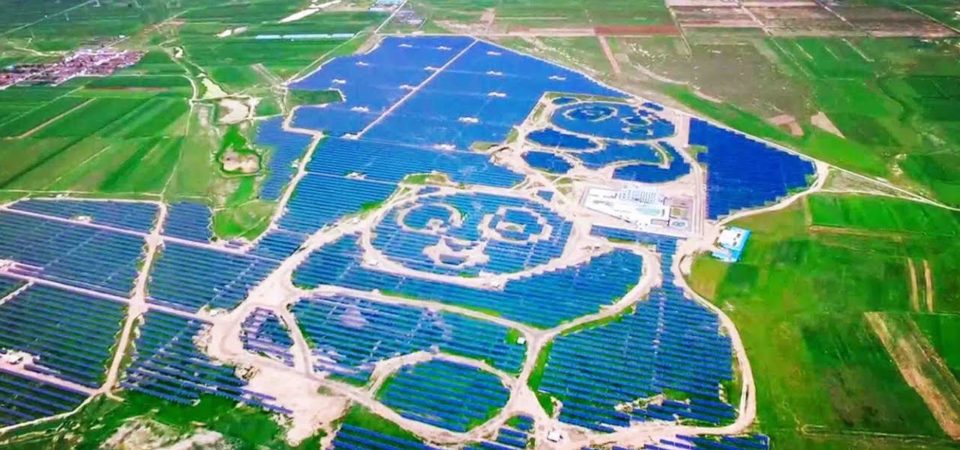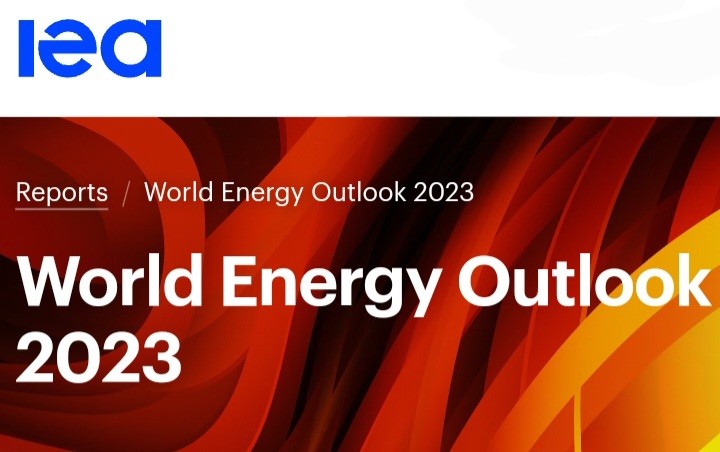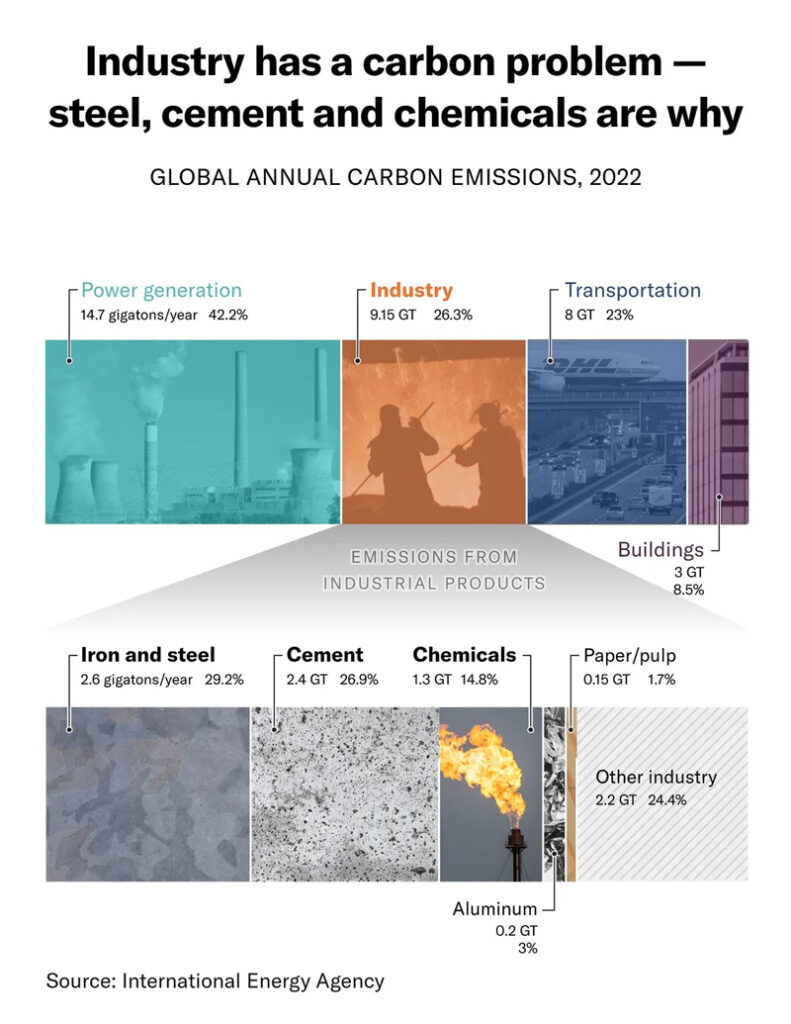10 MYTHS ABOUT THE ENERGY TRANSITION

China Green Energy/MAHB
The most recent Net Zero Roadmap from the International Energy Agency (IEA) shines an optimistic light on important trends in the global struggle against climate change. In a recent post, Kingsmill Bond and Sam Butler-Sloss of the Rocky Mountain Institute use the EIA’s findings to debunk ten common perceptions about the energy transition. What follows is what’s really happening according to the EIA, as summarized by Bond & Butler-Sloss. Emphasis in italics is ours.
- The energy transition is cheaper than “business as usual.” Conventional thinking argues that the capital costs of the energy transition are too high. But you also need to look at the costs of the fuel too — fossil fuels are expensive and renewables are free. The IEA looked at both capital costs and operational costs and noted that when you combine them, the energy transition will cost $12 trillion less than the IEA’s business as usual scenario. So whilst capital costs are higher, the ongoing savings from high fossil fuel prices more than outweigh this. In short, saving the planet is cheaper than destroying it. And the net zero scenario will mean lower energy prices for consumers.
- We are building enough grids. Conventional thinking looks at the opposition to the building of new grids, but doesn’t count the successes, those areas where the grid does get built. The IEA takes a dispassionate look at the totals. They calculate that we need to build 1.25 million miles of grids every year versus the average for the last 5 years of 1.2 million miles a year that we did actually build. In spite of all the opposition to change, we are in fact building 95 percent of the amount that is required. That final 5 percent is not easy, but it is certainly achievable.
- Carbon removal is not an excuse for inaction. The IEA note that it is much cheaper not to put the emissions in the air in the first place than to try to take them out later. Delayed action allowing more emissions would cost $1,300 billion per annum to remove the excess carbon from the air in the second half of the century; that is 50 percent more than we invest today on oil and gas capital expenditure.
- We have the technology. In 2021, the IEA calculated that we only had 50 percent of the technology that was required in 2050 to get to net zero. In 2023 that increased to 65 percent as the result of innovation in a range of areas, from batteries to green steel. As is so often the case, necessity is proving the mother of invention, and it is reasonable to expect that we will continue to increase the range of technology solutions rapidly over the next few years.
- We have enough land. Even if you take the most pessimistic way to calculate land requirements for solar and wind, we would require a maximum of 2.5 percent of available land. In fact, as noted by many others, this number hugely overstates the land use by counting the space between wind turbines, even though that space can be used for crops. However, even then it is clear that land availability is not an insoluble impediment to deploying renewables.
- Stranded assets are coming. Even if we stop building fossil fuel infrastructure today, many fossil fuel power plants and industrial assets will not be needed, and some existing oil and gas wells may be stranded. Already, $3.6 trillion is committed to building out fossil fuel infrastructure above the requirements of net zero.
- The supply chain for renewables is being built out. Factories are already being built to produce every year over 1,000 gigawatts (GW) of solar and 10,000 gigawatt hours (GWh) of batteries by 2030, the key building blocks of the renewable economy. This is driven by the hunt for industrial advantage in the industries of the future because business knows that you have to be in it to win it.
- More jobs. Of the 65 million people working in the energy sector, half already work in clean energy. The expansion of the renewable systems will create far more jobs than are lost in the fossil fuel systems. The IEA calculate that by 2030 there will be 30 million new jobs in the clean energy economy versus 13 million jobs lost in fossil fuels. Moreover, the jobs will go to those who seize the opportunities of the renewable era.
- Less resources for a renewable economy. They calculate that the total amount of resources needed for a renewable economy is two thirds less than those required to run the current fossil fuel economy. The reason why is that electrons and the infrastructure needed to move them around is much lighter than the 15 billion tonnes of fossil fuels we use every year.
- Renewables enable justice. Renewable technologies such as minigrids and cookstoves are the foundation of solutions to ensure that by 2030 we get electricity to the 775 million people who lack it and clean cooking to the 2,400 million who do not have it. They help to reduce premature deaths from air pollution by 3.6 million people every year, mainly in the emerging and developing economies.
Read more here.
ROUND-THE-CLOCK CLEAN CLEAN ELECTRICITY AND HEAT
400kWe 247Solar Plants deployed at scale
247Solar Plants™ bridge the gap between conventional wind and solar and the need for round-the-clock utility power and industrial-grade heat. 247Solar Plants store the sun’s energy as heat instead of electricity, for 18 hours or more, at much less than the cost of batteries. No generators are required, and 247Solar’s turbines can also burn a variety of fuels, including hydrogen, to ensure 24/7/365 dispatchability.
Extensive Applications
On-grid or off-grid, 247Solar Plants offer a 24/7 alternative to fossil fuels for a broad range of applications:
- CHP: 24/7 low-carbon Combined Heat & Power for industry
- Ultra Heat: Each 247Solar Plant can provide up to 1,500,000 Btu/hr. of heat at temperatures up 1000℃/1800℉ for industrial processes such as cement, glass, steel making, or minerals processing
- Microgrids: Always-on, emissions-free electricity and heat for islands, mines, communities, facilities
- 24/7 baseload power: 24/7 solar electricity, especially for emerging economies
- Green Hydrogen: 24/7 solar electricity and heat to power electrolysis around the clock
- Green Desalination: 24/7 solar electricity and heat to purify water around the clock
THE CLEAN ENERGY TRANSITION IS UNSTOPPABLE
 Don’t take just our word for it. In announcing his organization’s annual flagship report, Fatih Birol, Executive Director of the International Energy Agency (IEA), pointed to a variety of hopeful trends that, in his words, show that “The transition to clean energy is happening worldwide and it’s unstoppable.”
Don’t take just our word for it. In announcing his organization’s annual flagship report, Fatih Birol, Executive Director of the International Energy Agency (IEA), pointed to a variety of hopeful trends that, in his words, show that “The transition to clean energy is happening worldwide and it’s unstoppable.”
As summarized in an article by Maxine Joselow and Vanessa Montalbano of the Washington Post, the IEA’s World Energy Outlook “offers a rosy prediction of the growth of clean-energy technologies around the world. It portrays the decline of fossil fuels, the main driver of rising global temperatures, as all but inevitable.”
The Post’s authors cite several climate-friendly scenarios likely to materialize within the next decade according to the EIA’s report, including:
- Ten times as many electric vehicles on the roads worldwide.
- Solar panels generating more electricity than the entire U.S. power system.
- Electric heat pumps outselling fossil fuel boilers globally.
The EIA report attributes these encouraging developments and others to the confluence of both supportive government policies and market forces, and it predicts that by 2030:
- Renewables’ share of the global electricity mix will approach 50 percent, up from around 30 percent today. Renewables share of new power capacity will approach 80%.
- Global demand for all fossil fuels will peak before 2030, with three times as much investment flowing to offshore wind projects as to new coal- and gas-fired power plants.
- Annual investment in clean energy already exceeds investment in fossil fuels, and the gap will continue to grow.
The Post article quotes Kate Larsen, a partner at energy research firm The Rhodium Group, as saying, “We’ve reached escape velocity in scaling renewables and electric vehicles, two key areas where there has been significant policy focus and technology cost reductions over the past decade,”
Read the executive summary of the IEA report here
DECARBONIZING CEMENT, STEEL AND CHEMICALS IS DOABLE

Canary Media
A series of articles from Canary Media observes that “Industry has a carbon problem,” but that solutions now exist or are on the horizon to decarbonize the three biggest carbon emitters – cement, steel and chemicals.
Industry as a whole contributes more than a quarter of annual global carbon emissions. Of this, iron and steel, cement, and chemicals are responsible for roughly 75% of industrial emissions overall. These sectors are generally considered “hard to abate,” due to the enormous amount of heat they use and the fact that most industrial heat is produced today by burning fossil fuels. And many of these industries’ production processes produce additional carbon emissions of their own.
Read more here and here to learn why Canary’s authors believe that practical solutions are emerging.
FOLLOW & JOIN 247Solar
Contact: info@247solar.com
